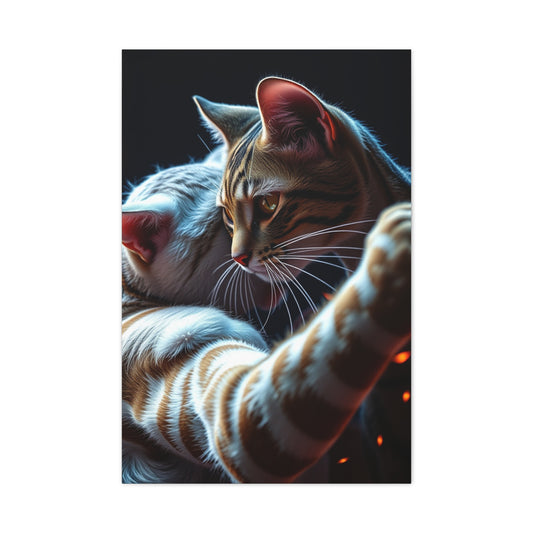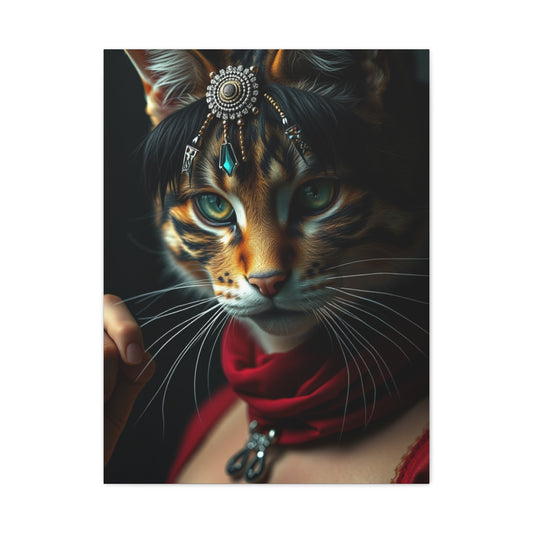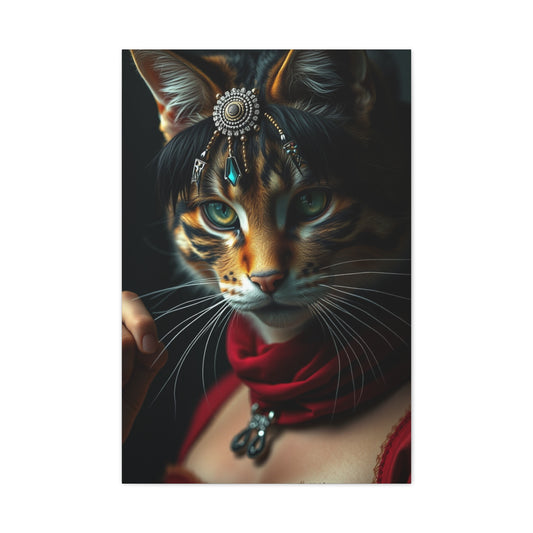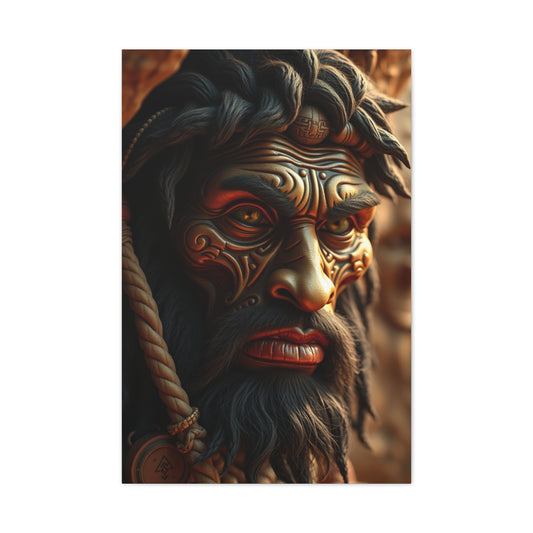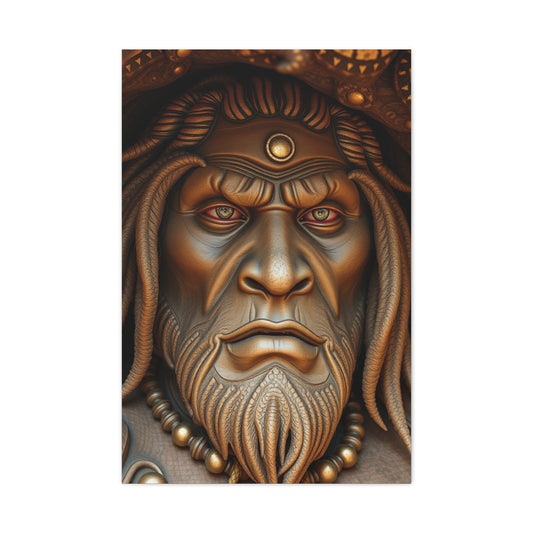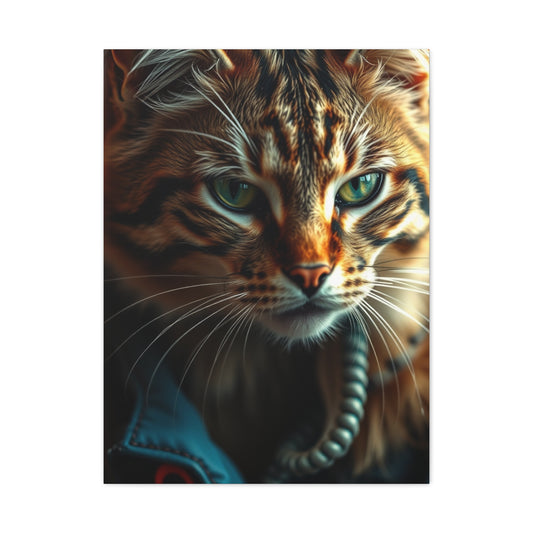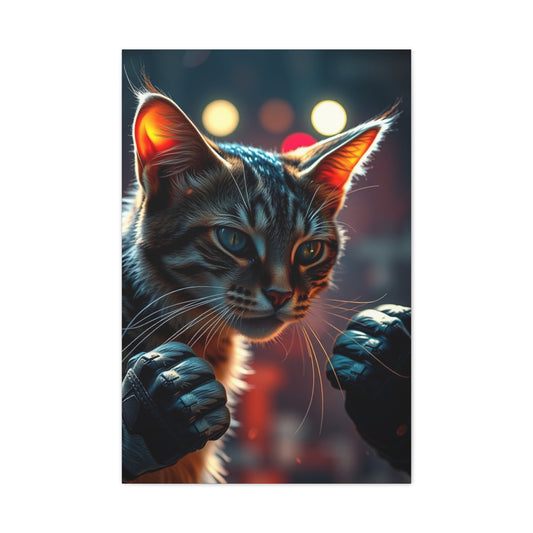As the days grow shorter and the cool air of winter sets in, Hanukkah arrives as a celebration of light, courage, and connection. Known as the Festival of Lights, Hanukkah is an eight-night Jewish holiday that invites people to come together, reflect on history, and create lasting memories with loved ones. It is a holiday that blends ancient tradition with modern celebration, reminding us of the power of hope and perseverance. Each year, families gather to light the menorah, share meals, play games, and exchange small gifts, keeping the spirit of the holiday alive across generations.
Hanukkah’s origins reach back over two thousand years, to a time when a small group sought to reclaim and rededicate their temple after a period of struggle. Upon entering, they found only a tiny amount of sacred oil, barely enough to keep the temple’s flame burning for a single night. Yet, against all odds, the oil continued to burn for eight full nights, long enough for more oil to be prepared. This miraculous event is the foundation of Hanukkah and is honored each year when families light their menorahs, adding one candle per night until all eight glow together. The menorah becomes a symbol of resilience, faith, and the belief that light can always return, no matter how dark the world may feel.
The lighting of the menorah is at the heart of the celebration. The ritual is simple yet deeply meaningful. Each night, one more candle is added and lit using the shamash, the “helper” candle. Families often place the menorah in a window to share its glow with the outside world, a tradition that symbolizes spreading light beyond the home and into the community. This small act becomes a powerful gesture of hope, reminding everyone who passes by that light has the power to grow, little by little, night after night.
Beyond its religious significance, Hanukkah is a cultural moment that brings people together. For many, it is a time to pause amid the busyness of the season and spend time with those who matter most. It is an opportunity to share stories, reflect on blessings, and pass down rituals that have been celebrated for generations. Children learn the meaning of the holiday through games like dreidel, through tasting traditional foods like latkes and sufganiyot, and through the warmth of family gatherings where stories of courage and hope are told.
Food plays a special role during Hanukkah, turning ordinary evenings into festive feasts. Dishes fried in oil are served to honor the miracle of the oil from the Hanukkah story. Latkes, crispy potato pancakes served with applesauce or sour cream, are a beloved staple, as are sufganiyot, sweet jelly-filled doughnuts dusted with sugar. These foods are not only delicious but also symbolic, serving as a tasty reminder of resilience and abundance. Sharing a meal becomes an act of togetherness, a way to bring people closer as they sit around the table.
The dreidel game is another iconic part of Hanukkah, adding fun and playfulness to the celebrations. The four-sided spinning top, marked with Hebrew letters, creates moments of laughter and lighthearted competition. Traditionally played for small coins, nuts, or chocolate gelt, the game is an easy way to include children in the festivities while teaching them about the history and meaning of the holiday. The sounds of dreidels spinning and coins clinking have become as much a part of Hanukkah as the flickering candles.
Gift-giving is a newer tradition that many families have adopted, and its style varies widely. Some choose to exchange a gift each night, while others give one or two thoughtful presents over the course of the week. The focus is often less on the gifts themselves and more on the shared joy of giving and receiving. Small, meaningful tokens—books, games, homemade crafts—are often chosen to encourage connection and togetherness.
Songs and storytelling are also essential to the Hanukkah experience. Singing traditional Hebrew songs or reading the Hanukkah story aloud can create an atmosphere of reflection and celebration. These moments link the present to the past, giving younger generations a sense of belonging and identity. When a family gathers to sing, laugh, and share memories, they create new layers of meaning for the holiday.
Hanukkah carries themes that resonate beyond the Jewish community. It's story of finding light in the darkness speaks to anyone who has faced challenges and persevered. The simple act of lighting a candle can become a personal ritual of hope and gratitude, even for those who do not observe the holiday formally. In this way, Hanukkah’s message is universal: no matter how small the light may seem, it has the power to grow and spread.
The holiday is also an opportunity for generosity and giving. Some people mark the occasion by donating to charity, volunteering, or performing acts of kindness. These gestures extend the holiday’s message beyond the home and into the wider world, turning it into a season of service as well as celebration.
Hanukkah invites each person to create their own meaningful traditions. Some families host gatherings with extended relatives, while others keep the holiday intimate and quiet. Some prefer to cook together, telling stories as they fry latkes, while others gather for games, music, and laughter. No two Hanukkah celebrations are the same, and that flexibility is part of what makes the holiday so special.
As the menorah shines brighter each night, it mirrors the growing warmth and connection among those who gather around it. In a season often marked by cold weather and long nights, Hanukkah becomes a source of comfort and joy. It is a reminder that no matter how much darkness surrounds us, there is always a way to kindle light and share it with others.
Symbolism and Deeper Meaning of Hanukkah
The power of Hanukkah lies not just in its rituals but in the deep symbolism that runs through every tradition. At its heart, Hanukkah is about bringing light into darkness, hope into despair, and faith into uncertain times. When we light the menorah, we are reminded that even a small flame can illuminate a room. This act is symbolic of resilience and courage, showing that one spark of hope can keep a community strong even in the most challenging moments.
The menorah itself is rich in meaning. Each candle represents one night of the miracle, but together they form a picture of growing light. With every evening, as one more candle is added, we see how hope is cumulative—it grows as we nurture it. This tradition is also a reminder to be a source of light for others. The shamash, or helper candle, used to light the others, teaches a powerful lesson: sharing your light does not diminish it, but instead multiplies it. This simple act is a metaphor for kindness, generosity, and the ways we can support one another in daily life.
Even the placement of the menorah carries significance. Many families place it near a window, allowing the glow to be seen from outside. This practice is rooted in the idea of publicizing the miracle, sharing the message with the world rather than keeping it private. It’s a beautiful invitation to celebrate faith openly and to inspire those who pass by with the message of perseverance and hope.
Another layer of symbolism is found in the foods eaten during Hanukkah. Fried foods such as latkes and sufganiyot are not just festive treats; they are edible reminders of the oil that lasted eight days. Eating these foods ties celebrants to the miracle in a tangible way, allowing them to taste history and participate in a tradition that links generations together.
The dreidel game also carries a story within its spinning sides. Traditionally, it was played during a time when Jewish people were forbidden to study Torah. Children would gather to learn in secret, using the dreidel as a disguise—if soldiers approached, they could pretend they were just playing. The four Hebrew letters on the dreidel are often translated as “A great miracle happened there,” turning a simple game into a story of resistance and cleverness in the face of oppression.
Taken together, these symbols remind us that Hanukkah is not just a festive holiday but a lesson in finding light when life feels dim. It is a call to keep faith, to celebrate small victories, and to bring brightness to others through action and intention.
Modern Hanukkah Celebrations Around the World
While the heart of Hanukkah remains tied to ancient traditions, the ways people celebrate today have evolved and taken on new expressions. In many communities, public menorah lightings are held, bringing people together to witness the candles being lit in parks, town squares, and community centers. These gatherings turn the private ritual into a communal event, strengthening bonds between neighbors and sharing the spirit of the holiday with the wider world.
Music and art also play an important role in modern celebrations. Hanukkah songs, both traditional and contemporary, are sung in homes, schools, and synagogues, filling spaces with a joyful atmosphere. Families often use the holiday as an opportunity to teach children about history through storytelling, crafts, and interactive activities. Making menorahs out of clay, creating paper dreidels, or decorating the home with blue and white banners helps children engage with the holiday in a hands-on way.
Technology has introduced new ways to celebrate as well. Families separated by distance can join together virtually to light the candles simultaneously. Video calls make it possible to sing blessings and share in the moment, no matter where everyone lives. This has brought a new level of connection for those who might otherwise feel isolated during the holiday.
Gift-giving has also become a more common part of Hanukkah celebrations in modern times, particularly in places where it overlaps with other winter holidays. While traditionally small gifts such as coins or sweets were exchanged, many families now choose to give a present each night, ranging from simple gestures like handmade notes to more elaborate surprises. For some, this is also an opportunity to emphasize charitable giving, encouraging children to donate a toy, book, or a portion of their allowance to those in need. This not only honors the spirit of Hanukkah but also teaches compassion and generosity.
Food remains a centerpiece of the holiday. In addition to classic latkes and sufganiyot, creative cooks have begun experimenting with new recipes, blending traditional flavors with modern twists. Sweet potato latkes, gourmet doughnuts filled with unique flavors, and plant-based variations of classic dishes are all finding their way to Hanukkah tables. This evolution of cuisine reflects how the holiday continues to adapt while staying rooted in its symbolic meaning.
Hanukkah as a Celebration of Community
Hanukkah offers an important opportunity to strengthen connections, not just within families but within the community as a whole. Gathering together each night to light the candles is a ritual that encourages slowing down in a busy season. It creates space to talk, to reflect, and to share meals. For many, this is the most meaningful part of the holiday—the chance to be fully present with loved ones.
Communities often use Hanukkah as a time to come together in acts of kindness. Charity drives, volunteer events, and food collections are common ways to mark the holiday. These actions echo the central theme of bringing light to others. Some families even make it a tradition to dedicate one night of Hanukkah to a charitable cause, turning the focus outward and reminding everyone that miracles can still be made today through compassionate action.
Schools and cultural centers also hold events to educate those who may not be familiar with the holiday. These gatherings help promote understanding and inclusion, allowing people of different faiths to share in the joy and learn about the significance of the Festival of Lights. This not only preserves the traditions but also fosters respect and appreciation across communities.
For many, Hanukkah is a time of reflection as well. The gradual lighting of the candles can be a moment of mindfulness, inviting people to consider what “miracles” they have experienced in the past year, whether large or small. This practice helps cultivate gratitude, a theme that pairs beautifully with the spirit of the holiday season.
Creative Ways to Honor Hanukkah at Home
One of the most beautiful aspects of Hanukkah is its flexibility—it can be as simple or elaborate as you wish. Some families keep it quiet and intimate, focusing on prayers, candle lighting, and home-cooked meals. Others host large gatherings, complete with music, games, and festive décor. Whatever form it takes, the heart of Hanukkah is about togetherness and light.
Decorating the home can be a fun way to set the tone for the celebration. Many families adorn their spaces with blue and silver decorations, hang paper stars, and place menorahs in prominent locations. Some even create a special display table for dreidels, gelt, and other symbolic items.
Cooking together can be a cherished tradition as well. Preparing latkes with family members becomes not just a task but a memory-making experience. Children can help by shaping the latkes or dusting powdered sugar on sufganiyot. Sharing the kitchen turns cooking into a multi-generational ritual that deepens family bonds.
Another creative idea is to dedicate each night of candle lighting to a specific theme, such as gratitude, kindness, friendship, learning, or hope. After lighting the candles, family members can share reflections or stories related to the theme. This turns Hanukkah into an opportunity for deeper conversation and connection.
Some people like to incorporate acts of giving into each night. This could be as simple as writing encouraging notes for neighbors, baking treats for friends, or donating to a cause. These small acts extend the message of Hanukkah beyond the home, turning the holiday into a source of light for the entire community.
For those looking to include music, creating a playlist of traditional songs and modern favorites can set a festive mood. Singing together after lighting the candles can bring a sense of unity and joy to the celebration.
Emotional and Spiritual Dimensions of Hanukkah
Hanukkah is more than a historical commemoration; it carries a profound emotional and spiritual resonance that continues to inspire people today. Lighting the menorah can be seen as a meditation, an invitation to pause and reflect. Each candle becomes a symbol not only of the miracle of oil but also of the personal miracles we experience in our lives—moments of resilience, unexpected joy, and strength we didn’t know we had.
The gradual increase of light over eight nights mirrors the process of renewal. Spiritually, it encourages us to bring a little more light into our lives each day, whether that light takes the form of gratitude, forgiveness, compassion, or faith. It is a reminder that transformation does not happen all at once but builds gradually, just like the menorah’s glow.
For many, this holiday is also a time to reflect on the struggles of the past and honor the perseverance of ancestors. The Hanukkah story is one of reclaiming identity and freedom, standing firm in one’s beliefs despite adversity. Remembering this can bring a sense of connection to generations who have celebrated before, linking the present moment to centuries of history and resilience.
In a busy, modern world, Hanukkah offers a chance to slow down and create sacred time at home. The act of gathering together each night, saying blessings, and sharing food fosters a rhythm of mindfulness. It reminds us that joy can be found not only in big events but in simple moments of presence, conversation, and shared light.
Global Variations in Hanukkah Celebrations
Although the traditions of Hanukkah are rooted in the same historical narrative, the ways it is celebrated vary around the world, reflecting the diversity of Jewish culture. In some regions, music and dance are central to the holiday, with families singing traditional songs and performing folk dances after candle lighting. In other places, storytelling is emphasized, with elders sharing tales of history and faith with the younger generations.
In Israel, Hanukkah is often marked with public events, parades, and large-scale menorah lightings, making the holiday a national celebration. Schools may hold special programs where children perform plays and recite poems about the Maccabees and the miracle of the oil. Bakeries fill their shelves with endless varieties of sufganiyot, from the classic jam-filled version to gourmet creations with chocolate, caramel, or cream fillings.
In the United States and other countries with large Jewish communities, Hanukkah often becomes a bridge between cultures. Some families choose to integrate elements from the broader winter holiday season, such as decorating with lights, giving gifts, or hosting themed parties. This blending of customs allows Jewish families to celebrate their identity while also participating in the seasonal joy that surrounds them.
Smaller Jewish communities around the world may celebrate more quietly, but the spirit of Hanukkah remains the same. In remote areas, gathering even a handful of people to light a menorah can become a powerful and intimate expression of faith and unity. These celebrations are a testament to the enduring nature of the holiday, no matter where it is observed.
Hanukkah as an Opportunity for Gratitude and Reflection
Each night of Hanukkah can be seen as a moment to express gratitude—for life, for health, for the people who support and care for us. As each new candle is lit, many families take a few moments to share what they are thankful for. This practice can turn the holiday into a time of personal growth, encouraging mindfulness and an appreciation for blessings that might otherwise go unnoticed.
Reflecting on the past year can also be a meaningful way to engage with the spirit of Hanukkah. The story of the Maccabees is about overcoming challenges, so it is fitting to think about the obstacles we have faced and the strength we have found to keep moving forward. This process of reflection helps us identify our own personal “miracles”—times when things worked out against the odds, or when we discovered courage we didn’t know we had.
Gratitude and reflection also naturally lead to hope. As we look ahead to the future, the glowing candles remind us that darkness is never permanent. Just as the menorah gets brighter with each passing night, so too can our lives be filled with more light if we continue to nurture it.
Interfaith Understanding and Participation
Hanukkah is a Jewish holiday, but its message of bringing light into darkness resonates universally. People from different faith traditions often join friends or neighbors in celebrating, attending menorah lightings, or sharing in a festive meal. These moments of interfaith connection create bridges of understanding and respect.
If you are not Jewish but are invited to a Hanukkah gathering, participating with curiosity and respect can be a meaningful experience. Asking about the significance of the rituals, tasting traditional foods, and listening to the stories shared around the table can offer a deeper understanding of Jewish culture and history. Such experiences strengthen bonds between communities and promote a spirit of inclusion.
Even those who do not celebrate Hanukkah can be inspired by its lessons. The themes of perseverance, faith, and finding light in dark times are universal. Some people choose to incorporate the ideas of Hanukkah into their own lives by setting aside time during the season to perform acts of kindness, volunteer, or practice gratitude. This shows how the spirit of the holiday can transcend cultural and religious boundaries.
Passing Traditions to Future Generations
One of the most cherished aspects of Hanukkah is its ability to pass traditions down through families. Teaching children to light the candles, say the blessings, and play the dreidel game ensures that the story and its values continue to live on. These moments become part of a child’s memory, shaping their sense of identity and connection to their heritage.
For parents and grandparents, this holiday offers a perfect opportunity to share personal stories—what Hanukkah was like in their own childhood, how their families celebrated, and what it has come to mean to them over time. These conversations help create a living connection between past and present.
Even for adults without children, inviting friends or younger relatives to join in the celebration can keep traditions alive. Sharing recipes, teaching songs, or explaining the meaning of the menorah can turn a simple evening into a lesson in culture and history.
Renewing and Reinventing Traditions
While maintaining tradition is important, Hanukkah is also a holiday that lends itself to creativity. Some families choose to reinvent certain practices to better reflect their values or circumstances. For example, a family might decide to focus less on material gifts and more on experiences—planning an outing, a creative project, or a shared activity for each night.
Others might incorporate themes of social justice into their celebrations, using each night to highlight a cause that is meaningful to them. This could include learning about organizations that help those in need, donating to charities, or volunteering together as a family. These acts can give the holiday an added layer of purpose, turning it into a celebration that benefits not only those who participate but also the wider community.
For those who enjoy artistic expression, Hanukkah can become a time for creativity. Writing poems or songs, crafting handmade menorahs, or designing unique decorations are all ways to make the holiday personally meaningful. This kind of engagement allows each person to contribute their own spark of light, keeping the holiday vibrant and relevant for new generations.
Lessons of Hanukkah for Today’s World
Hanukkah carries messages that are as powerful now as they were centuries ago. The story of the Maccabees and the miracle of the oil reminds us that even when circumstances seem impossible, perseverance can lead to victory. In a world that often feels fast-paced and uncertain, this lesson is deeply comforting. It reminds us to hold onto faith—not necessarily religious faith alone, but faith in ourselves, our communities, and our capacity to overcome challenges.
The symbolism of light growing night after night is a gentle guide for how we can approach our own lives. Rather than expecting instant transformation, Hanukkah shows us that progress can be gradual and still profoundly meaningful. Each small act of goodness, kindness, or courage we take builds toward a brighter whole. In this way, the menorah becomes a metaphor for self-improvement and social change.
In a world that sometimes struggles with division, Hanukkah also calls us to celebrate identity while respecting others. The holiday commemorates a time when a group fought to preserve their way of life. That same spirit encourages all people to honor their heritage and values, while also seeking harmony with the world around them.
Creating Personal Meaning During the Festival
Hanukkah offers an opportunity for each person to find their own connection to the holiday. For some, it may be primarily a time of religious devotion, reciting prayers and blessings with deep reverence. For others, it may be a cultural or family-centered celebration, focused on gathering together and passing on traditions. Neither approach is more or less “correct”—what matters is that the holiday feels authentic and meaningful.
Finding personal meaning can be as simple as choosing a nightly ritual to accompany candle lighting. Some families share something they are grateful for before saying the blessings. Others take a moment of silence after the candles are lit, simply watching the flames flicker and letting their thoughts settle. Some use the time to discuss moral or spiritual lessons drawn from the Hanukkah story, exploring topics such as bravery, justice, and faith.
Creative expression can also deepen the experience. Journaling about what the lights represent, writing letters to loved ones, or creating artwork inspired by the menorah are all ways to engage with Hanukkah on a more personal level. These acts make the holiday not just a passive tradition but an active, living practice.
Strengthening Relationships Through Hanukkah
One of the most beautiful aspects of Hanukkah is how it brings people together. Whether it is immediate family, extended relatives, friends, or neighbors, the holiday creates space for connection. Sharing meals, playing games, and lighting candles together strengthen bonds and nurture a sense of belonging.
Hosting a Hanukkah gathering can be as simple as inviting a few friends over to share latkes and watch the candles burn. For those who live far from family, gathering with chosen family or community members can create new traditions and offer comfort during the winter season.
Acts of giving can also bring people closer. Whether exchanging small gifts or pooling resources to support a charitable cause, these gestures remind everyone that generosity is a key part of the holiday spirit. In many families, children are encouraged to choose toys or clothes to donate, learning from an early age that part of celebrating is helping others.
Even if celebrated quietly, Hanukkah can be a way to deepen existing relationships. The nightly rhythm of candle lighting offers opportunities for conversation, storytelling, and laughter. This shared time helps nurture emotional closeness and creates memories that endure.
Keeping the Spirit Alive Beyond Eight Nights
Though Hanukkah lasts for eight nights, its lessons can extend well beyond the holiday. The commitment to bring light into darkness can become a guiding principle for the rest of the year. Some families choose to adopt ongoing traditions that reflect Hanukkah’s values, such as setting aside one evening a week for family time, volunteering regularly, or practicing gratitude at the dinner table.
Personal growth practices can also be inspired by Hanukkah. The idea of adding one candle each night can translate into adding one new positive habit at a time. Rather than trying to make sweeping changes all at once, this gradual approach can make new habits easier to sustain.
For those interested in social action, Hanukkah can be a yearly reminder to stand up for what is right. The Maccabees’ story is one of resistance and courage, and it can inspire people to speak out against injustice, support marginalized voices, and work to create a more compassionate society.
Balancing Tradition and Innovation
As society changes, so too do celebrations. Hanukkah has proven remarkably adaptable, and each generation finds new ways to make it relevant. Some choose to embrace eco-friendly practices, using beeswax candles or energy-efficient electric menorahs. Others create virtual candlelighting gatherings so relatives in different cities can celebrate together.
Innovation does not mean losing tradition—it means allowing the holiday to grow with the times. The prayers, the menorah, and the story remain at the heart of Hanukkah, but new music, recipes, and customs can keep the celebration fresh. This balance ensures that the holiday continues to feel meaningful for children, adults, and future generations.
The Role of Memory and Storytelling
Hanukkah is, at its core, a story. Each year, retelling that story keeps it alive. Storytelling is one of the most powerful ways to connect with the past, and it turns history into something personal and relatable. Parents and grandparents passing on the narrative of the Maccabees help children understand that the freedom to practice one’s beliefs was hard-won.
Personal stories can be just as important as historical ones. Recounting favorite Hanukkah memories—funny mishaps, special gifts, or meaningful moments—turns the holiday into a family archive. These stories are what children will carry forward, telling them to their own children one day.
For those who are new to the holiday, seeking out books, films, or educational programs about Hanukkah can bring depth to the experience. Learning about the holiday’s origins and significance adds another layer of meaning to lighting the candles and saying the blessings.
Honoring Hanukkah with Acts of Kindness
Perhaps the most lasting way to celebrate Hanukkah is by becoming a source of light in someone else’s life. Simple acts of kindness—visiting someone lonely, cooking a meal for a neighbor, or writing a heartfelt note—can carry the spirit of the holiday beyond the home.
Some people use each of the eight nights to focus on a different theme related to kindness: gratitude, generosity, forgiveness, community, learning, courage, joy, and hope. These themes can guide both conversation and action, turning Hanukkah into an intentional time of growth and giving.
Kindness can also take the form of self-compassion. The holiday can be a moment to forgive oneself for past mistakes, to rest, and to nurture one’s own well-being. After all, we cannot offer light to others if we have allowed our own to go out.
The Lasting Message of Hanukkah
As the final night arrives and all the candles burn brightly, there is a feeling of completeness and fulfillment. The room glows with warmth, and for a brief moment, the darkness outside seems to recede. This final night serves as a reminder that hope, once kindled, has the power to grow into something beautiful and sustaining.
Even when the candles have burned down, the memory of their light stays with us. Hanukkah encourages us to carry that sense of possibility into our daily lives, to be a source of light in every setting—our families, our workplaces, and our communities.
Conclusion
Hanukkah is far more than a holiday marked by candles and festive foods—it is a timeless reminder that light has the power to overcome darkness. The story of the Maccabees and the miracle of the oil continues to inspire people to stand strong in their values, celebrate resilience, and find reasons for hope even in uncertain times. Each night of the Festival of Lights offers a moment to pause, reflect, and add just a little more brightness to the world.
Beyond its rituals, Hanukkah is an invitation to connect—with loved ones, with tradition, and with the deeper parts of ourselves that yearn for meaning and renewal. The menorah’s glow becomes a symbol of togetherness, illuminating conversations, laughter, and shared memories that last long after the candles have burned out.
Hanukkah also reminds us that miracles still happen, often in small and quiet ways: in acts of kindness, in renewed faith, in moments of courage. Whether celebrated with grand gatherings or quiet reflection, it calls us to be bearers of light, adding hope and joy to the lives of others. In doing so, we keep the spirit of Hanukkah alive—not just for eight nights, but all year long.











